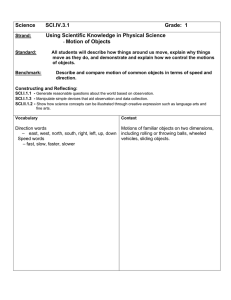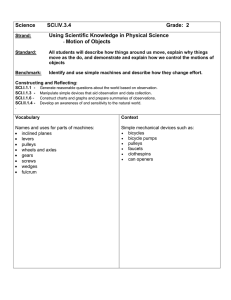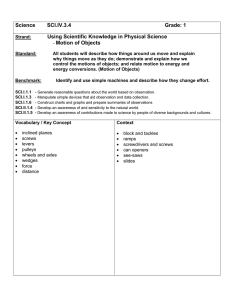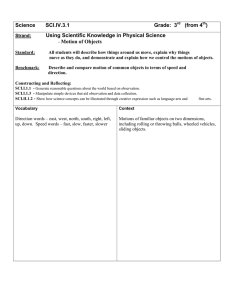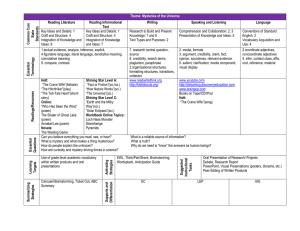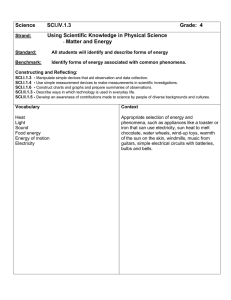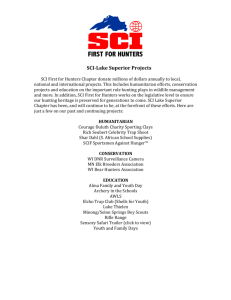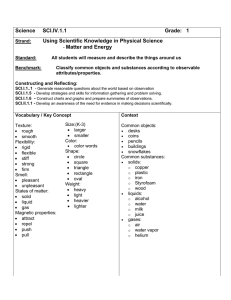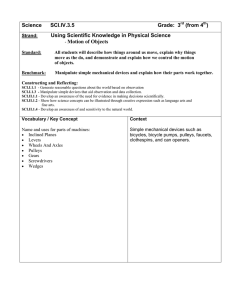Science SCI.IV.3.5
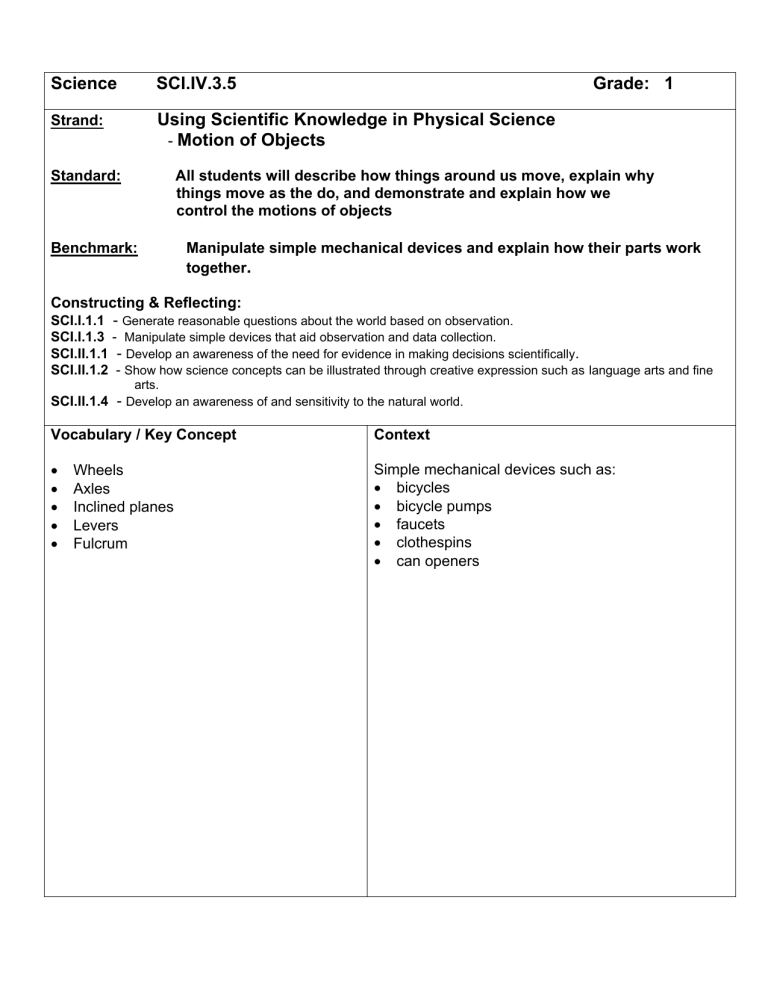
Science SCI.IV.3.5 Grade: 1
Strand:
Using Scientific Knowledge in Physical Science
-
Motion of Objects
Standard: All students will describe how things around us move, explain why
things move as the do, and demonstrate and explain how we
control the motions of objects
Benchmark: Manipulate simple mechanical devices and explain how their parts work
together
.
Constructing & Reflecting:
SCI.I.1.1
- Generate reasonable questions about the world based on observation.
SCI.I.1.3 - Manipulate simple devices that aid observation and data collection.
SCI.II.1.1
- Develop an awareness of the need for evidence in making decisions scientifically .
SCI.II.1.2 Show how science concepts can be illustrated through creative expression such as language arts and fine
arts.
SCI.II.1.4
- Develop an awareness of and sensitivity to the natural world.
Vocabulary / Key Concept
•
Wheels
•
Axles
•
Inclined
•
Levers planes
•
Fulcrum
Context
Simple mechanical devices such as:
•
bicycles
•
bicycle pumps
•
faucets
•
clothespins
•
can openers
Knowledge and Skills
Benchmark Clarification:
Simple mechanical devices usually contain two or more simple machines that work together as a system. Examples of simple mechanical devices include the following: egg beaters, can openers, or pencil sharpeners.
It is important for students to manipulate a variety of devices and to discuss with their peers how the parts work together. Some devices may be taken apart and put back together.
Students will:
•
•
Operate a simple mechanical device
Explain how each part works and how the parts work together
Resources
Coloma Resources:
New Discovery Links “little” reader with reproducible blackline master.
- Using Tools
Other Resources:
•
Webliography. http://mtn.merit.edu/mcf/SCI.IV.3.E.5.html
•
Constructing Toys & Concepts for K-2.
NEW
DIRECTIONS UNIT.
• http://www.BCMSC.k12.mi.us/
•
Jennings, . Planes, Gliders, Helicopters &
Other Flying Machines . Kingfisher, 1993 .
Instruction
Benchmark Question: How do we manipulate simple machines and make their parts work together?
Focus Question: How do simple machines work on a bicycle?
Lesson:
Bring a bicycle to class and have students discuss how simple machines help us move from place to place. Have students point out the simple machines on the bicycle as they discover them.
None
Assessment
Teacher Notes:
Describe how things around us move, explain why things move as they do, and demonstrate and explain how we control the motion of objects.
Young children should become acquainted with the scientific descriptions of the motion of objects, which generally includes discussion of speed, direction and changes in speed or direction. The understanding of the force/motion relationship can become increasingly quantitative, as the students get older. Instruction should be included which will help students overcome a common belief that sustained motion always requires sustained force.
Early elementary students can develop a foundation for understanding magnetic attraction through various investigations of magnetism. Determining categories of objects that are attracted to a magnet, distances through which a magnet will attract objects and how many small objects a particular magnet will attract helps children consolidate their experiences into scientific knowledge.
Elementary students should be able to understand that simple machines are devices controlling forces. A lever can transform a small downward force into a large upward force thus making a task easier. Simple machines help us to accomplish tasks that would otherwise be impossible. Young children can see simple machines all around them. Homes and playgrounds offer rich experiences for children to experiment with concepts related to simple machines.
